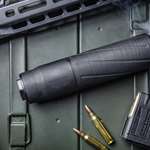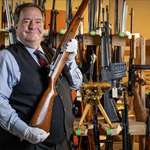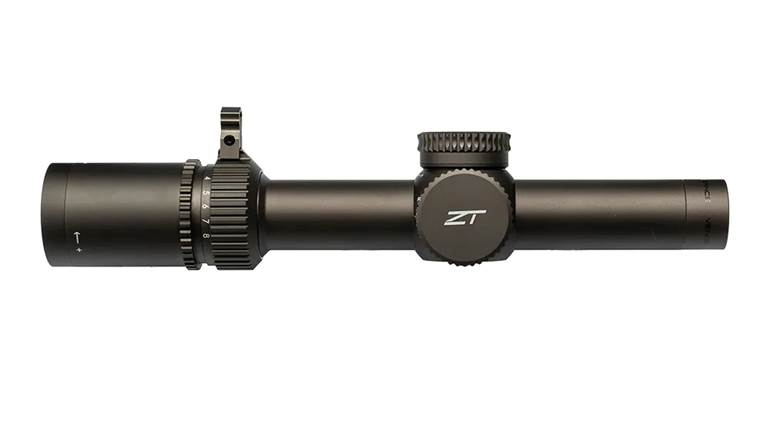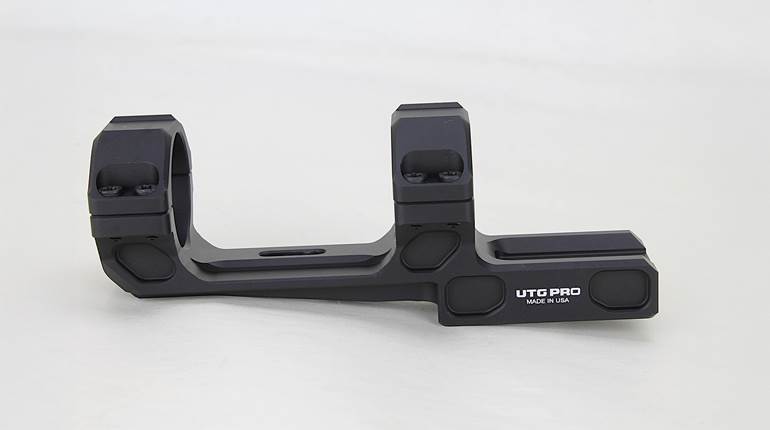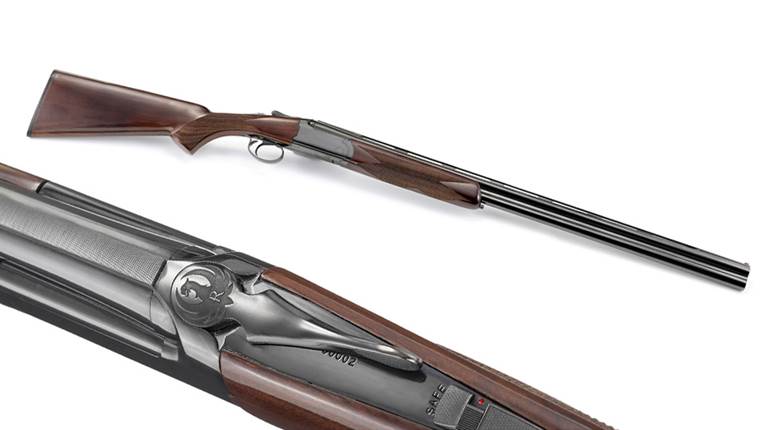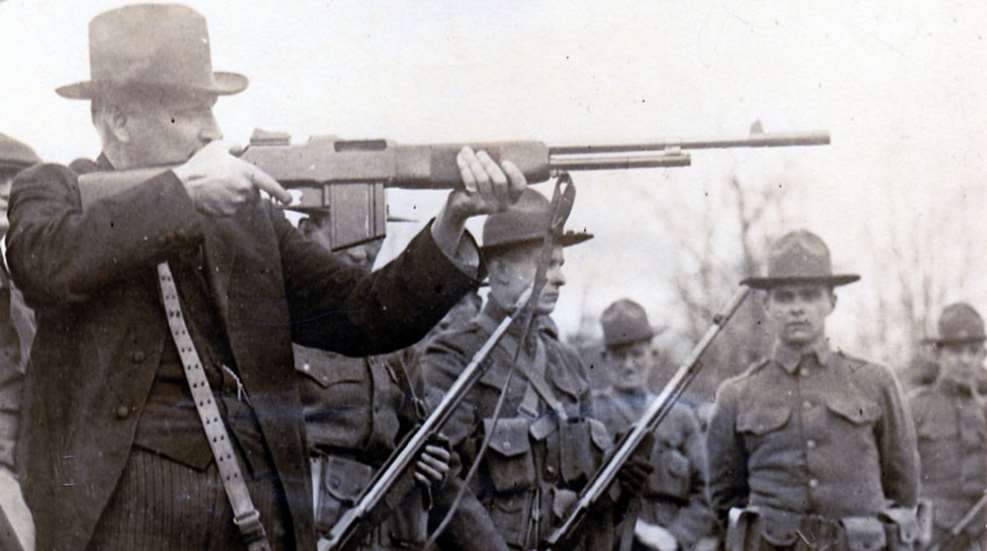
When World War I erupted in Europe in 1914, all of the belligerent nations were equipped with traditional heavy machine guns. When 18th century infantry tactics went up against 20th century military technology, the results were predictable and gruesome. The war soon devolved into trench warfare, with the heavy machine guns in fixed positions defending each side’s trenches against attacks emanating from the enemy’s trenches. It was soon obvious that attacking infantrymen needed automatic weapons that were easily transportable while hurrying across “No Man’s Land.”
While various designs were tried, the French developed what is arguably the first “true” automatic rifle, the Le Fusil Mitrailleur 1915, CSRG usually referred to as the “Chauchat” after its inventor, French army Capt. Louis Chauchat. Working in conjunction with several other armorers, Chauchat fabricated the first working model of the gun in 1913, just prior to the outbreak of the Great War. The gun fired the standard French 8x51 mm R Lebel cartridge from a semi-circular, detachable magazine (with windows on each side) at a rate of approximately 300 rounds per minute. Weighing about 19 lbs., it was certainly heavier than a standard bolt-action service rifle but was entirely capable of being carried and operated by a single soldier.
The French army utilized large numbers of Chauchats during World War I on the Western Front, but, as the guns began to see combat use, they exhibited a number of malfunctions. Nevertheless, the Chauchat remained the standard French automatic rifle throughout the war.
The U.S. Army had tested several automatic rifle-type arms from just after the turn of the 20th century through early 1918, including the Madsen “Machine Rifle,” the Hotchkiss Automatic Rifle and the Berthier Automatic Rifle, but none proved successful. Thus, when the United States entered the war, the American Army did not possess any satisfactory automatic rifles in its arsenal. To rectify this, a total of 15,998 standard 8 mm Chauchats were procured from the French government and issued to the combat troops of the American Expeditionary Force (AEF). Due to the troublesome tendency of the Chauchat to malfunction, and the lack of adequate training by the newly arrived American Doughboys, the gun quickly gained a negative reputation within the U.S. Army.
In order to have commonality of ammunition, the Americans requested that the gun be re-designed to chamber the U.S. .30-’06 Sprg. cartridge and have a detachable box magazine to replace the problematic semi-circular magazine. The modified gun, often referred to as the “Model 1918 .30 Caliber Chauchat,” turned out to be a disaster. Due to improper engineering, including the failure to take into consideration the dimensional differences between the French and American cartridges, functioning of the U.S. gun was atrocious, and, by comparison, the French Chauchat was a paragon of reliability. This resulted in an arm that saw almost no use by the U.S. Army despite some 18,004 Model 1918 American Chauchats being delivered by the end of the war. Undoubtedly, the woeful performance of the version modified to .30 caliber helped contribute to the almost universal disdain and condemnation of the Chauchat. By 1918, the U.S. Army divisions in France were equipped with French Model 1915 Chauchat Automatic rifles in 8 mm, and they were widely used in combat by American forces.
Due to the Chauchat’s litany of flaws, it was clear that a better automatic rifle was needed. Fortunately, a legendary American gun designer devised a marvelous rifle that proved to be exactly what our armed forces were looking for.
On Feb. 27, 1917, John Moses Browning took a prototype automatic rifle that he had been developing for a number of months to the Colt Patent Firearms Mfg. Co. plant in Hartford, Conn., to be demonstrated before, in his words, a number of “officers and experts.” The gun was soon seen as the embodiment of the following concept envisioned by the U.S. War Dept. in early 1917:

“[T]o equip all infantrymen with a portable, shoulder-fired rifle firing the standard full-power .30-06 military rifle cartridge and capable of delivering semi- and full-automatic modes of high firepower. A skirmish line of troops, each man armed with a machine rifle, would advance on enemy territory employing … ‘walking fire,’ as developed by the French Army.
“Initially each weapon was to be fired semi-automatically, forcing the enemy to keep their heads down. If return fire was received, or during the actual closing with the enemy in the final phase of the assault, the selectors on the rifles were to be switched to full-automatic, allowing the skirmish line to deliver massive bursts of assault for a relatively short duration.”
Naturally, the U.S. Army Ordnance Dept. was eager to evaluate and test John Browning’s newest creation. A trial board was convened in May 1917, and the automatic rifle thoroughly impressed the members of the board who witnessed the testing. Excerpts from the final report include the following:
“This gun gave a remarkable performance for one of its type, it resembles an ordinary shoulder rifle and was designed by its inventor with a view to be used as a semi-automatic rifle, to be used automatically up to about 200 shots in an emergency without injury to the gun.
“In many of the essential features such as reliability of function, durability, lightness and handiness, the Browning appears to be superior to the rather crude Chauchat, and to the Hotchkiss light rifle, which was exhibited but not entered in the tests … .
“The Board, therefore, recommends that prompt consideration be given to this subject and that arrangements be made without delay for the procurement of at least 10,000 Browning light rifles.”

Due to the impressive tests results, and the dire need for reliable automatic rifles with which to equip our troops fighting in Europe, the Ordnance Dept. awarded the first production contract for 12,000 “Browning Machine Guns” to Colt on July 16, 1917. In order to avoid confusion between the newly adopted Browning automatic rifle and the Browning Model of 1917 water-cooled machine gun, the new gun was designated as the “Model of 1918,” even though it was adopted in 1917.
Although the order was given to Colt—since the company owned the patent rights to the gun—the firm was heavily engaged in making other designs for our armed forces, including the Model 1917 Browning heavy machine gun and the Model 1911 .45 ACP pistol. In order to get the badly needed “light rifles” into production as expeditiously as possible, it was decided that Winchester Repeating Arms Co. would begin engineering work posthaste. A September 1917 memo by Winchester’s Edwin Pugsley revealed his company’s key role in getting the new design ready for mass production. By now, it was designated as the “Model of 1918 Browning Automatic Rifle” and frequently was called by its initials “BAR.” Almost universally, each letter in the abbreviation was pronounced, i.e., “B-A-R” rather than using the word “bar” to refer to the gun.
“The BAR was a totally new concept and we at Winchester were properly awed … . I got Colt on the phone and borrowed the only sample from noon on Saturday (September 15) to 8 a.m. Monday (September 17). I was at the Colt plant that Saturday noon and got the rifle. I had everybody in the Engineering Department, who could possibly be needed, awaiting my arrival with the gun. I took the gun apart and explained how it worked. After this the components were spread around to the group and plans began to develop … .”
As evident in the above memo, Winchester was only permitted to have possession of the prototype BAR for a single weekend, and was expected to do all the engineering work necessary to develop production drawings for the gun in that short period of time. Why Winchester was only allowed to have the prototype for such a brief period was not explained, but, by working around the clock for two days, the company accomplished the task. Winchester’s key role in the production of the new Browning Automatic Rifle was discussed in the book America’s Munitions, 1917-1918, authored by the Assistant Secretary of War Benedict Crowell:
“[T]he Colt Co., which owned the Browning rights, in September, 1917, turned over to the Winchester Repeating Arms Co. the task of developing the drawing and gauges for the manufacture of Browning automatic rifles on a large scale. Early in March, 1918, the Winchester Co. had tooled up its plant and turned out the first Browning rifles. These were shipped to Washington and demonstrated in the hands of gunners before a distinguished audience of officers and other government officials, and their great success assured the country that America had an automatic rifle worthy of her inventive and manufacturing prestige. By the first of May the Winchester Co. had turned out 1,200 Browning rifles.”
In order to supplement manufacture of the Browning Automatic Rifles, the Marlin-Rockwell Corp. was given a production contract and began delivery in June 1918. Orders were later placed with Colt, and the company manufactured a few hundred guns by the end of June 1918 as well.
The gas-operated Model 1918 BAR weighed approximately 16 lbs., fed from a 20-round detachable box magazine and could fire either semi-automatically or full-automatic at a rate of approximately 550 rounds per minute.
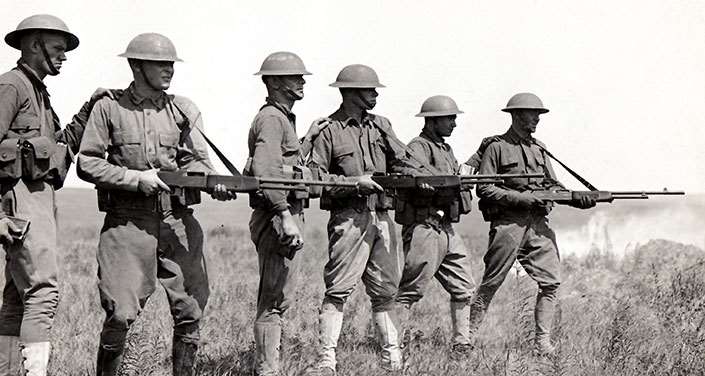
Although almost twice as heavy as the Model 1903 bolt-action service rifle, the BAR was about 3 lbs. lighter than the French Chauchat automatic rifle. As military arms go, the Model 1918 Browning Automatic Rifle was a most attractive firearm. The receiver was milled from a solid block of steel, and machined to the most exacting tolerances. It was finished with a commercial-quality blued finish, and it had a walnut stock and checkered fore-end. The BAR was fitted with sling swivels and a special leather sling, similar to the standard M1907 sling but longer, and with three metal adjustment “frogs.” A canvas “gunner’s belt” with magazine pockets and a metal cup to hold the butt of the BAR during the envisioned “marching fire” mode of combat was also put into production.
The first recorded combat use of the M1918 BAR in World War I was on Sept. 12, 1918, during the opening phases of the Meuse-Argonne Offensive, in the hands of Doughboys of the U.S. Army’s 79th Division. Since this was just two months before the Armistice, it is obvious that the BAR did not see extensive use during the war. Curiously, this was not due to a shortage of BARs because there were some 17,000 in France by June 1918, which would have been sufficient to equip the American infantry divisions deployed in combat zones. However, Gen. John Pershing ordered that the guns be withheld from service until September, and most of our Doughboys had to continue using the French Chauchats. There have been two explanations given for the seemingly inexplicable delay in giving American troops a superb automatic to replace the often troublesome Chauchat. The most logical reason was given by Assistant Secretary of War Crowell in America’s Munitions, 1917-1918:
“[A]t the time these supplies were arriving the fighting against the retreating German Army was at its height, and there was no time for the troops on the line … to replace their Chauchat automatic rifles with light Brownings, of where there was … an ample supply in France.”
The other reason proffered was related in a report by the U.S. Army staff that if the war went on for another year as expected, the tide could turn in favor of the Germans and the enemy might capture a BAR, in effect “reverse-engineering” it and using the rifle against us. Frankly, using this logic, no new armament should ever be fielded because it could be copied by the enemy. Regardless of the reasons for delay, once our allies witnessed the performance of the BAR in combat, all were clamoring for the guns. However, the American government would not permit any foreign orders to be accepted until the U.S. armed forces were fully equipped with BARs.
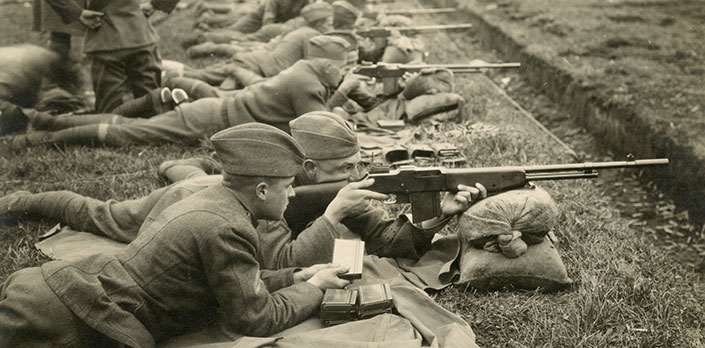
By the time of the Armistice on Nov. 11, 1918, a total of 52,238 Browning Automatic Rifles had been delivered to the government; approximately 27,000 by Winchester, 16,000 by Marlin-Rockwell and 9,000 by Colt. Manufacture of the BAR did not cease with the end of the Great War, and continued into early 1919, by which time just over 102,000 had been manufactured.
The Model 1918 Browning Automatic Rifle was clearly the best automatic rifle developed and fielded during World War I. There was, literally, no other arm of this type equal to John Browning’s automatic rifle.
After the Armistice, the BAR was firmly entrenched as the standard U.S. military squad automatic weapon. Slightly modified versions saw extensive service during World War II and Korea. The BAR was officially superseded by the M60 machine gun in 1957, but Browning’s masterpiece continued to serve well into the 1960s. It is truly an iconic American military firearm and yet another testament to the genius of John Moses Browning.












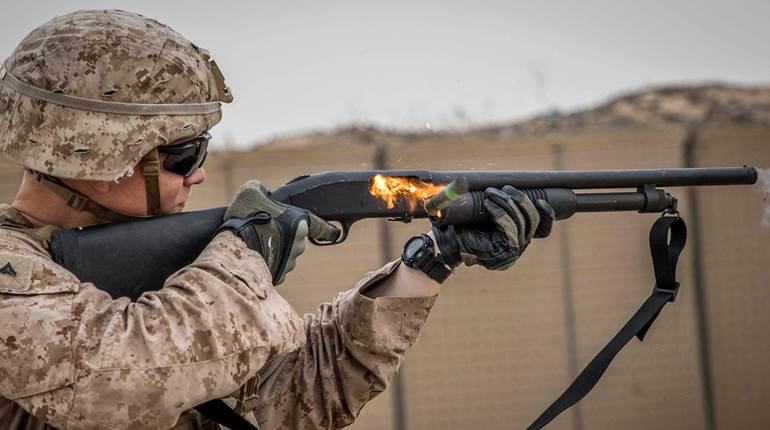
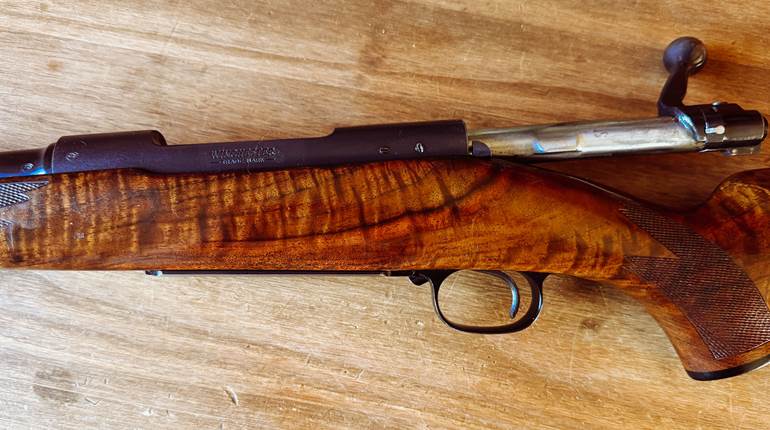

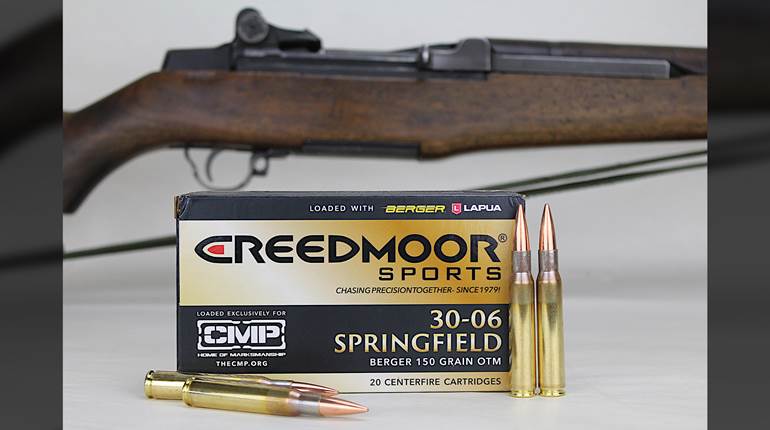

![Winchester Comm[94]](/media/1mleusmd/winchester-comm-94.jpg?anchor=center&mode=crop&width=770&height=430&rnd=134090756537800000&quality=60)
![Winchester Comm[94]](/media/1mleusmd/winchester-comm-94.jpg?anchor=center&mode=crop&width=150&height=150&rnd=134090756537800000&quality=60)

